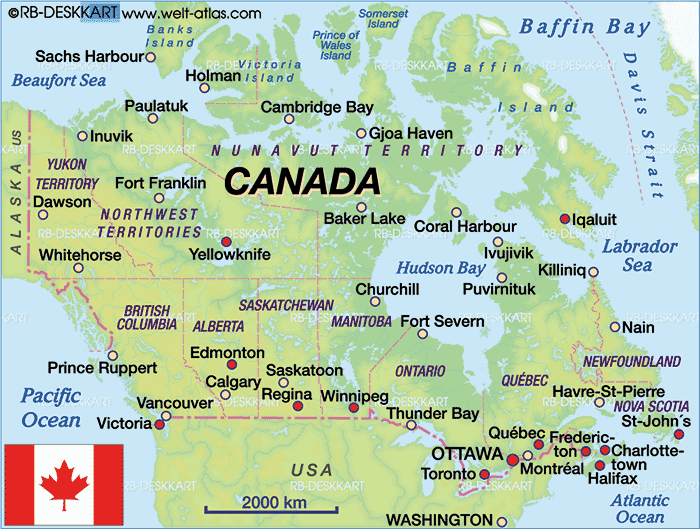Rebecca Hardenbrook and Julie Sherman, both graduate students in the Department of Mathematics, participated in the Biogeochemical Exchange Process at Sea Ice Interfaces (BEPSII) Sea Ice School May 14-23, 2022, at the Canadian High Arctic Research Station (CHARS) in Cambridge Bay, Canada.
The purpose of the BEPSII program is to provide early-career polar researchers an opportunity to learn fieldwork methods for understanding and analyzing polar sea ice firsthand, as well as building a community in the sea ice research world. Competition for acceptance in the program is competitive—nearly 100 applications were received for 30 spots.
Recently, the U Department of Mathematics asked Hardenbrook and Sherman about their adventures in the Canadian High Arctic. Below is an edited compilation of their responses. Find the full interview with Hardenbrook here and with Sherman here.
How did you become interested in sea ice research?
Hardenbrook:
I started my college-level educational journey at the U as an undergrad in 2014. I knew that I wanted to pursue a career that would allow me to do something related to studying climate change in some way, but I also found my passion in studying math. I began working with [distinguished professor of mathematics] Ken Golden in my junior year. He works right in that intersection of climate change, specifically sea ice and math. I was lucky enough to be accepted to the U for my Ph.D., which I am grateful for because being able to continue in this research direction has opened my eyes to a lot of really important research questions about things—such as the fact that all living things depend on sea ice to survive, including humans.
Sherman:
I wanted to study how math can be applied to climate as soon as I began my studies as an undergraduate at the University of Minnesota. I became interested in sea ice after meeting with Ken Golden. He had been a part of the NSF’s Mathematics and Climate Research Network that I was also involved in. Dr. Golden’s projects are interesting, and definitely relevant to my interests in climate change.
How did you travel to Cambridge Bay?
Sherman:
We had four flights total. First a flight from Salt Lake City to Seattle and then to Edmonton, Alberta. We spent the night in Edmonton because there is only one flight a day to Cambridge Bay. The next day we flew out, had a short stop to Yellowknife, and then to Cambridge Bay.
Hardenbrook:
On all of our flights, I couldn’t stop looking outside the window on the plane as the landscape changed slowly from the familiarity of the Wasatch mountains to the flattened landscape surrounding Edmonton to the frozen lakes and dense woods surrounding Yellowknife to the endless snowy and icy terrain of the Canadian High Arctic, which includes the area in the Northwest Territories, Yukon, and Nunavut.
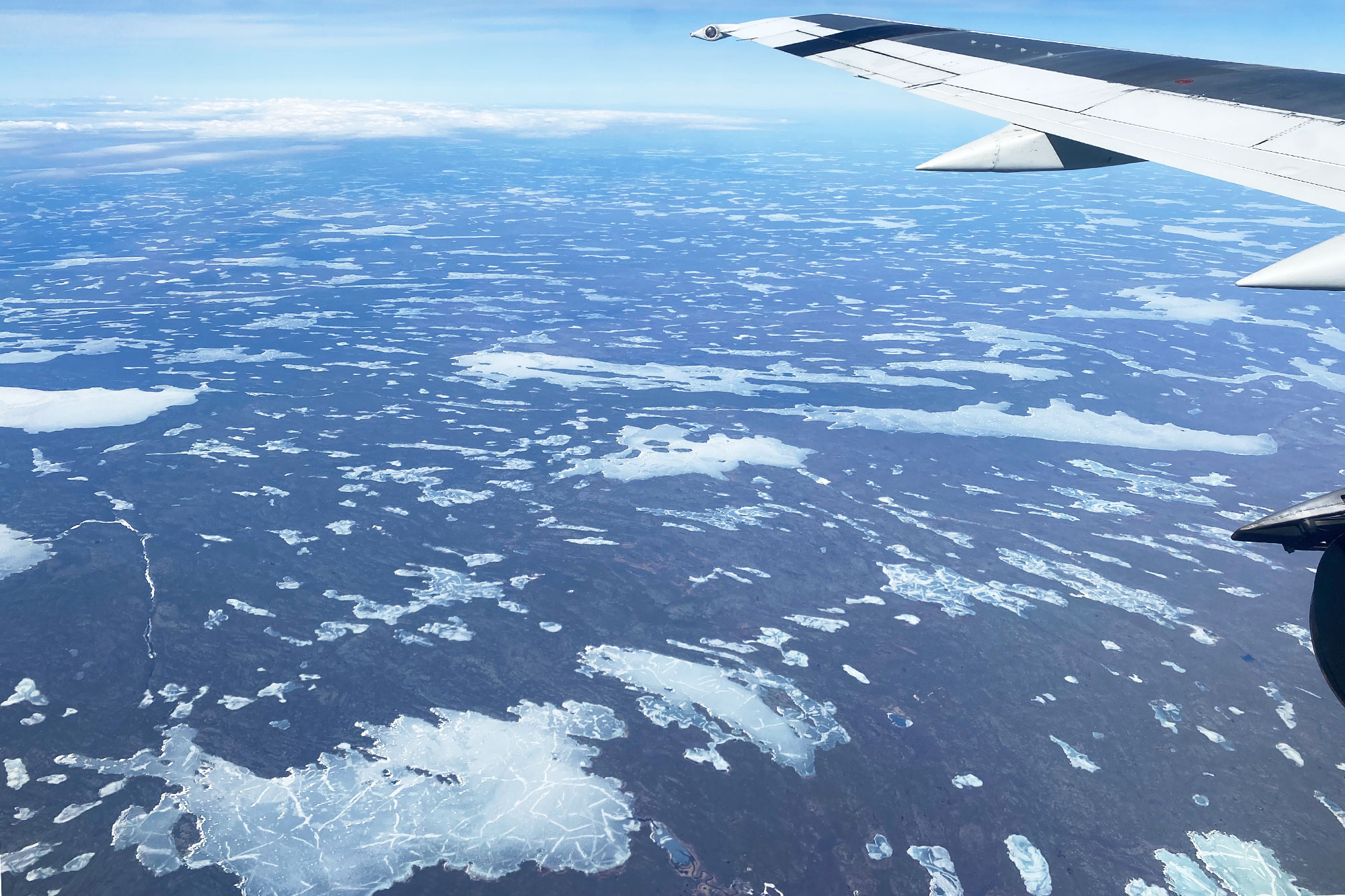
Flying to Cambridge Bay.
What was it like meeting the other fellow scientists and colleagues?
Hardenbrook:
Meeting other blooming scientists was equally as exciting as actually getting to be on the sea ice for the first time. I now have 30 friends all around the world who are working on exciting and relevant problems relating to polar sea ice, who I can potentially work with in the future. I certainly have never had that sort of network before! The relationships I made with other early-career researchers at the BEPSII Sea Ice School left me with a renewed passion for my own work and for asking questions I haven’t thought of before.
Sherman:
It was amazing to meet all these people. It seemed like a really friendly community. There was a COVID outbreak among the group, so many had to quarantine. Before [the outbreak], there was tons of energy and ideas for collaboration. Everyone was really cool! I’m really happy to have made these connections.
What was a typical day like?
Sherman:
We would wake up around 8 a.m. with breakfast in our flat—the groceries were provided by the staff. Lectures would start at 9 a.m. and last until noon. There were usually two different lectures, with several short breaks in between. Lunch was served at 12:30 p.m., followed by hands-on activities around 2 p.m. Some days it was field work and other days lab work or modeling. Our last day was group work. The work continued until 6 p.m. At 7, we had dinner, followed by free time. Some would watch hockey—one night we did a pub quiz, or sometimes we might all watch movies together.
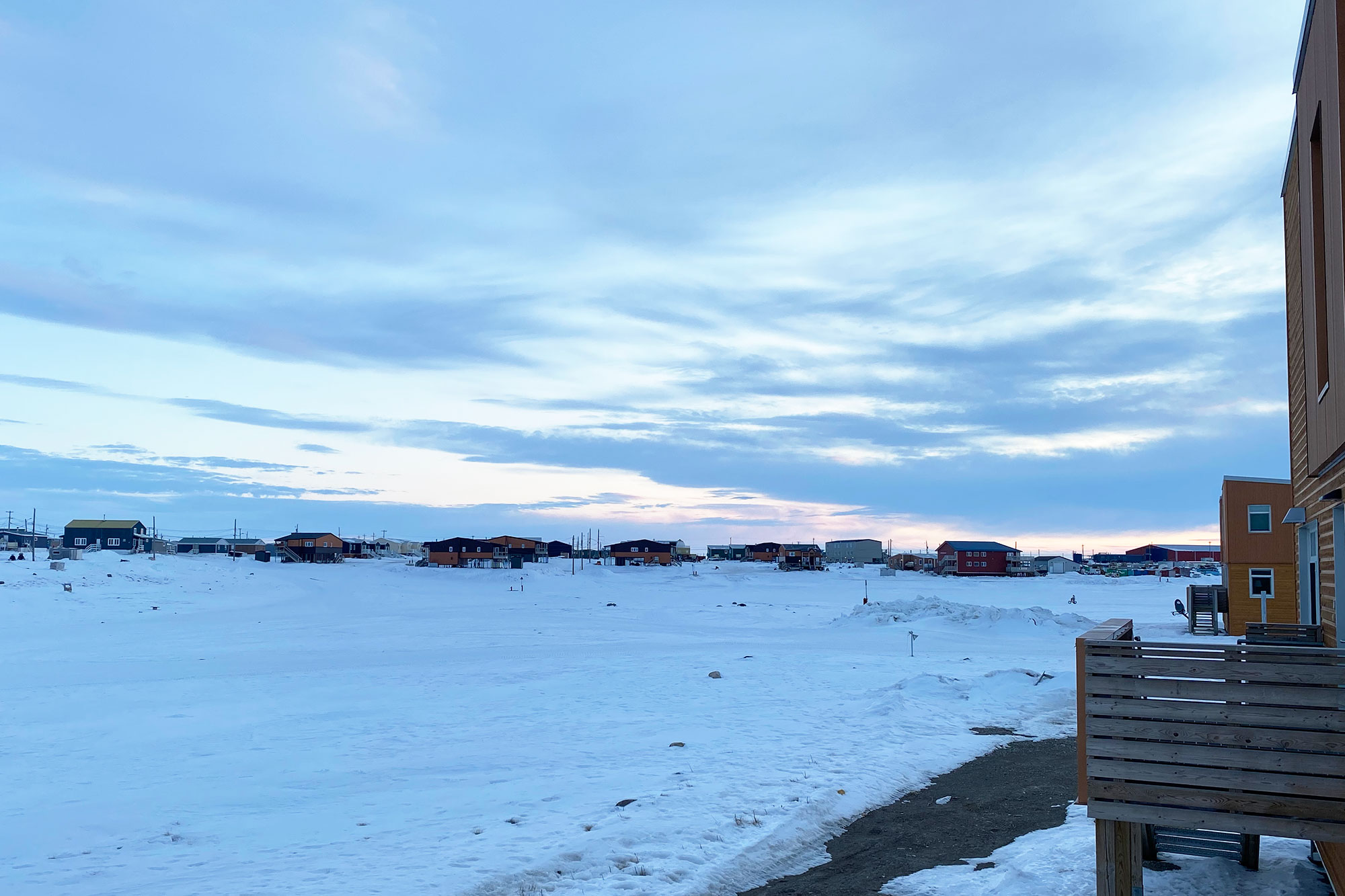
Endless sunset at Cambridge Bay–photo taken about 11 p.m.
Hardenbrook:
The activities really varied day by day, but we did have several lectures from experienced polar researchers that ranged among topics. For example, we heard from experts studying biophysical processes of the ecosystems and organisms living within the Arctic Sea ice. The researchers are investigating the movement and transport of critical nutrients and trace metals in the Chukchi Sea, the optical properties of sea ice, and how snow on the surface comes into play.
We did have a few days of fieldwork; the first two primarily were practice days for learning how to drill ice cores, dig snow pits, take snow hardness measurements, make sack holes and more. We had a lot of free time to explore the area surrounding Cambridge Bay, although we didn’t venture too far away from the town itself. You only have to go out 3/4 of a mile or so before you really understand how remote the area is.
Sherman:
We did go into the town of Cambridge Bay—the folks were friendly, and they invited us to some of their summer festivities—called frolicks. These were activities like snowmobile races, music and dancing. Unfortunately, because of the COVID outbreak, we couldn’t attend any of them but the culture of the town seemed pretty fascinating.
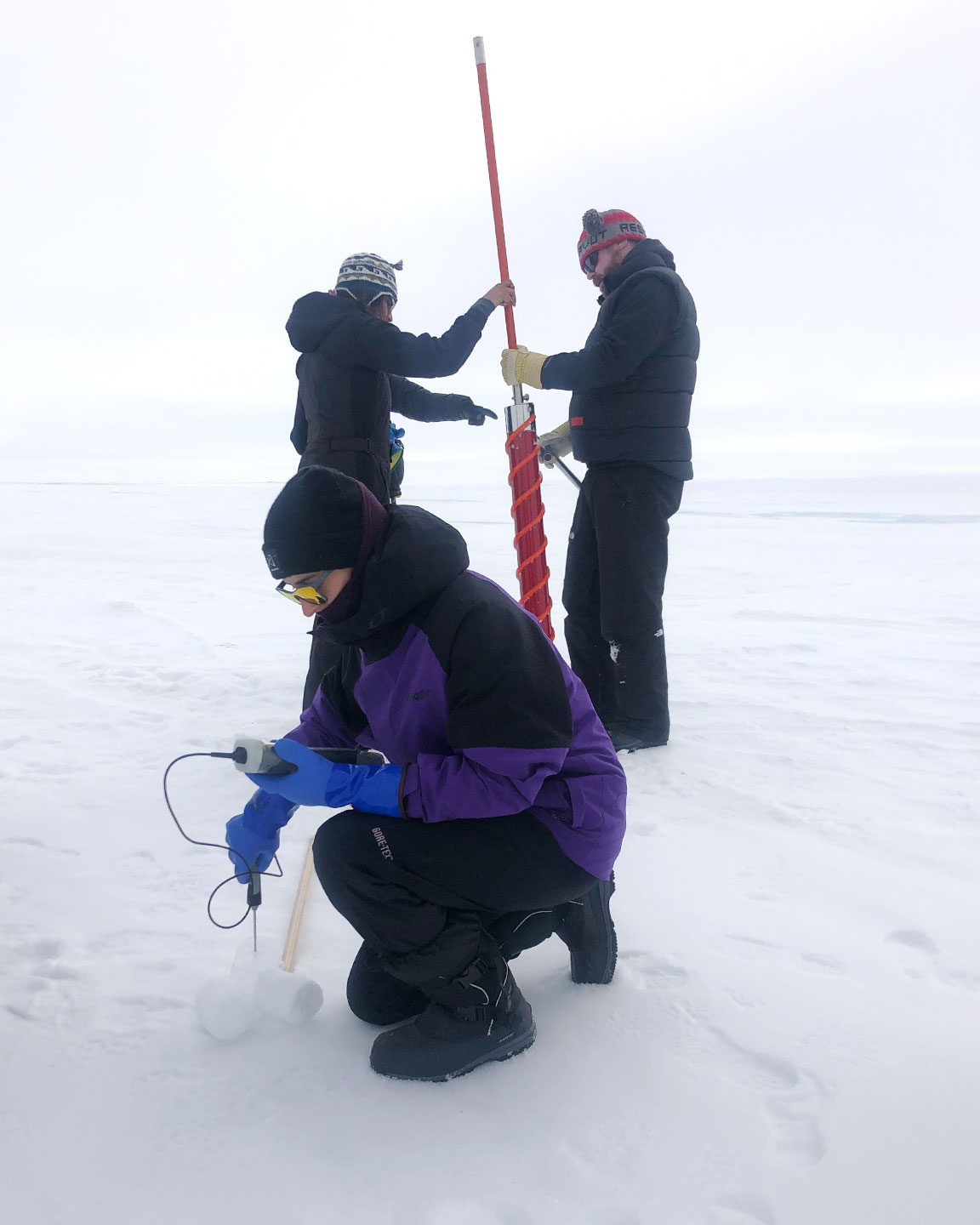
Hardenbrook doing research with colleagues.
What were your living quarters like? What about your meals?
Hardenbrook:
We lived in apartments of eight people each, and within the apartments, we shared a room with one person. Our apartments were part of the Canadian High Arctic Research Station (CHARS) campus, and they were very nice. Because the sun was out for most of the day (or for several hours the entire day), our apartments were pretty warm despite the outside temperature being below freezing.
Sherman:
Meals were catered, and the food was surprisingly good and diverse! I didn’t expect much given that it’s nearly impossible to grow food that far north, but there were fresh fruits and veggies. Each meal came with dessert, so that was nice, too. I’m sure it was expensive—someone said that a watermelon cost $75!
What did you enjoy most about the experience? What was the environment like?
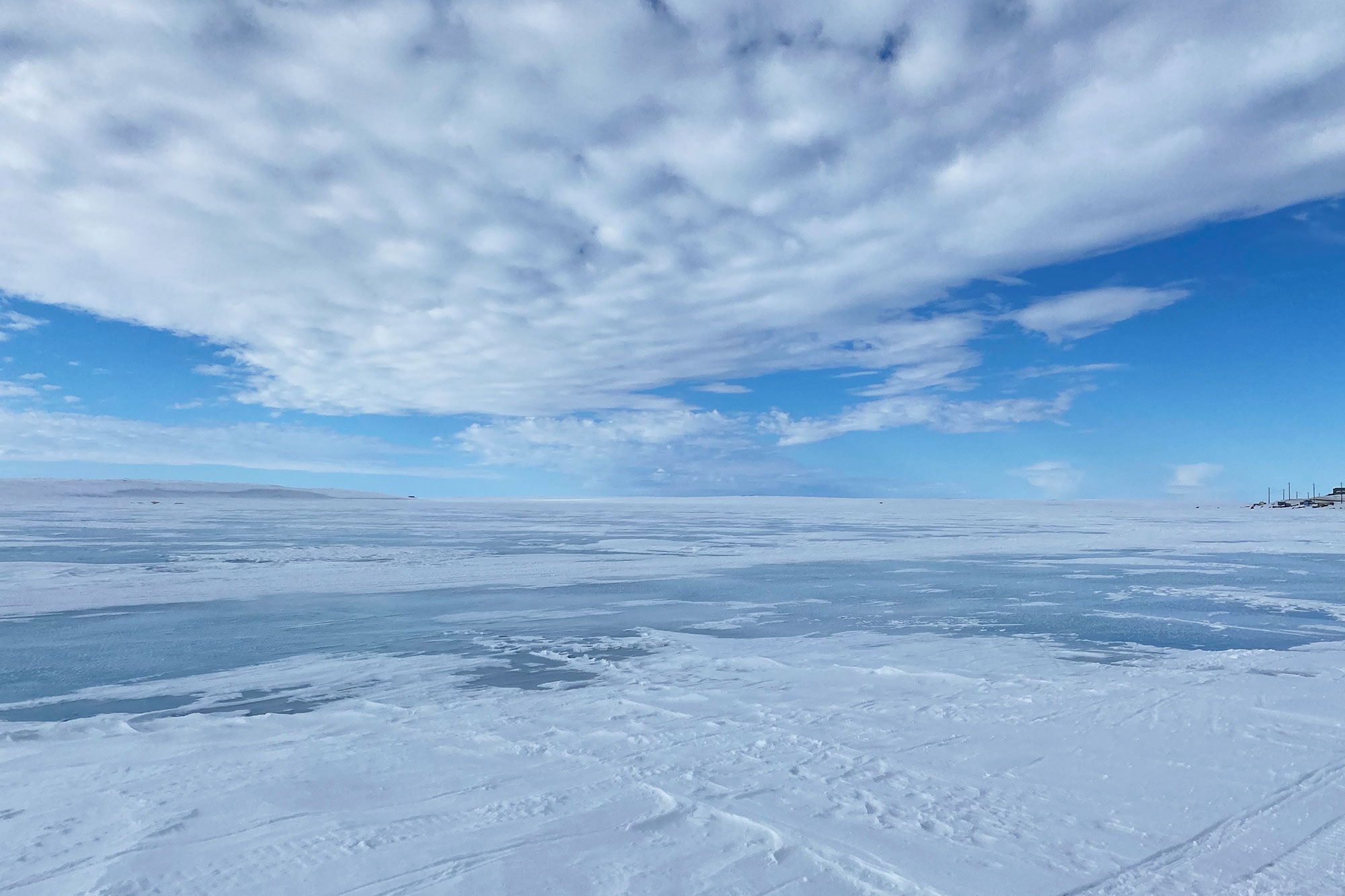
A sea ice vista.
Hardenbrook:
I truly enjoyed the entire experience, but I think selfishly finally getting to be able to walk on the sea ice, see the algae at the bottom of the ice core we took, feel the cold summer Arctic air on my face, and experience that environment was life-changing for me. I did get a little emotional when I first stepped out onto the ice because I’ve wanted to be able to do that now for the last six years.
I am also so grateful to be able to make the friends that I did. The people I met there are so passionate about their work, and that drives me to continue doing research in this field. The environment was like nothing I’ve experienced, and it’s kind of hard to put into words.
The air was incredibly dry despite us being right near the ocean—I mean it’s technically a desert up there—so I think the cold felt a little less intense unless it was windy (which it often was). I think the most notable thing for me was just how quiet and flat it is. I could see many miles on a clear day.
There is an Inuit legend about a family of giants who died while crossing Victoria Island looking for food. These giants are the three eskers (a ridge of stratified sand and gravel, deposited by meltwater from a retreating glacier or ice sheet) nine miles outside of Cambridge Bay. They are named Uvayuq (after the father), Amaaqtuq (after the mother, who was pregnant), and Inuuhuktu (after the son). It is so flat that you can see Uvayuq clearly from the town. In fact, some of us actually considered running to it, but we got too nervous about potentially meeting a bear on our way, so we didn’t do it.
Luckily, we didn’t see any bears (polar or grizzly), but we heard that there was a polar bear 30 miles out from the town somewhere. We did see a few Arctic foxes, which was really exciting because early on in our time there, their fur was completely white and they are hard to see. As time went on, we saw Arctic foxes that were starting to shed their winter coats. Their summer fur is short and black, so they’re much more visible. We also saw a few Arctic hare, but they are very good at hiding so we didn’t see too many. There were also a lot of birds—unfortunately, I’m not much of a birder at the moment so I couldn’t identify them.
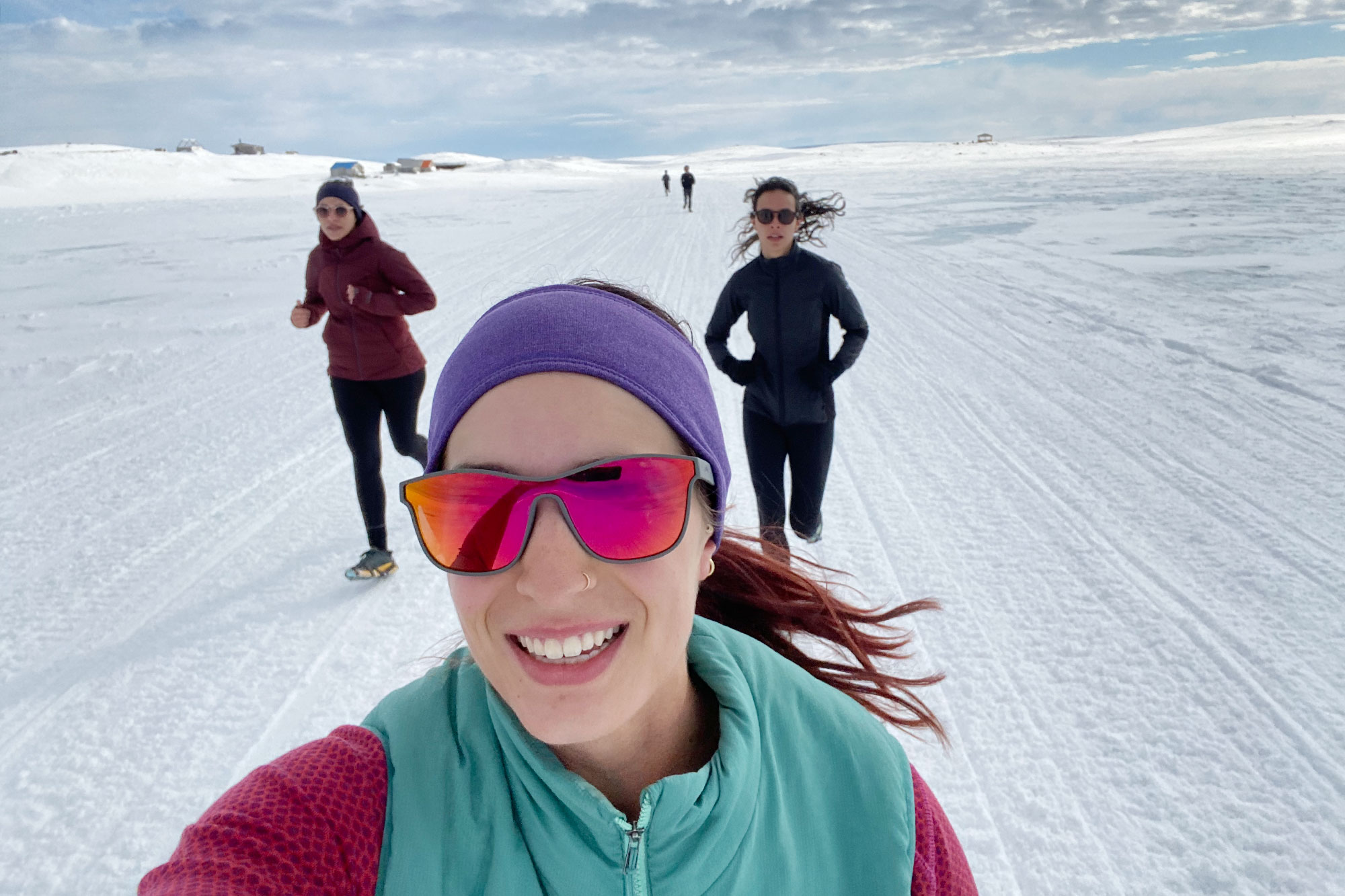
Hardenbrook and colleagues running at Cambridge Bay
Sherman:
The environment was definitely cold and pretty barren, everything still covered in snow. The first couple of days it was sunny and warm (like 30F!), so that was a nice treat. One of the coolest things was watching the sun not set. A few nights I stayed up late and became obsessed with watching it never go down. I’d go out every 30 minutes and watch it travel across the sky, but it never set. Of course, the sun would dip down to the horizon, but it wouldn’t cross it, so it was like a continuous sunset from 10:30 p.m. to 2 a.m.
What are your plans after you receive your Ph.D.?
Sherman:
I hope to stay in academia studying math as it applies to climate.
Hardenbrook:
I am hoping to get a postdoctoral research and teaching position at a college or university. I love my research, and I also love teaching undergraduate students about math, sea ice and the environments around us. A life where I can continue on with both of my passions would be a good one, and so I hope to do that.
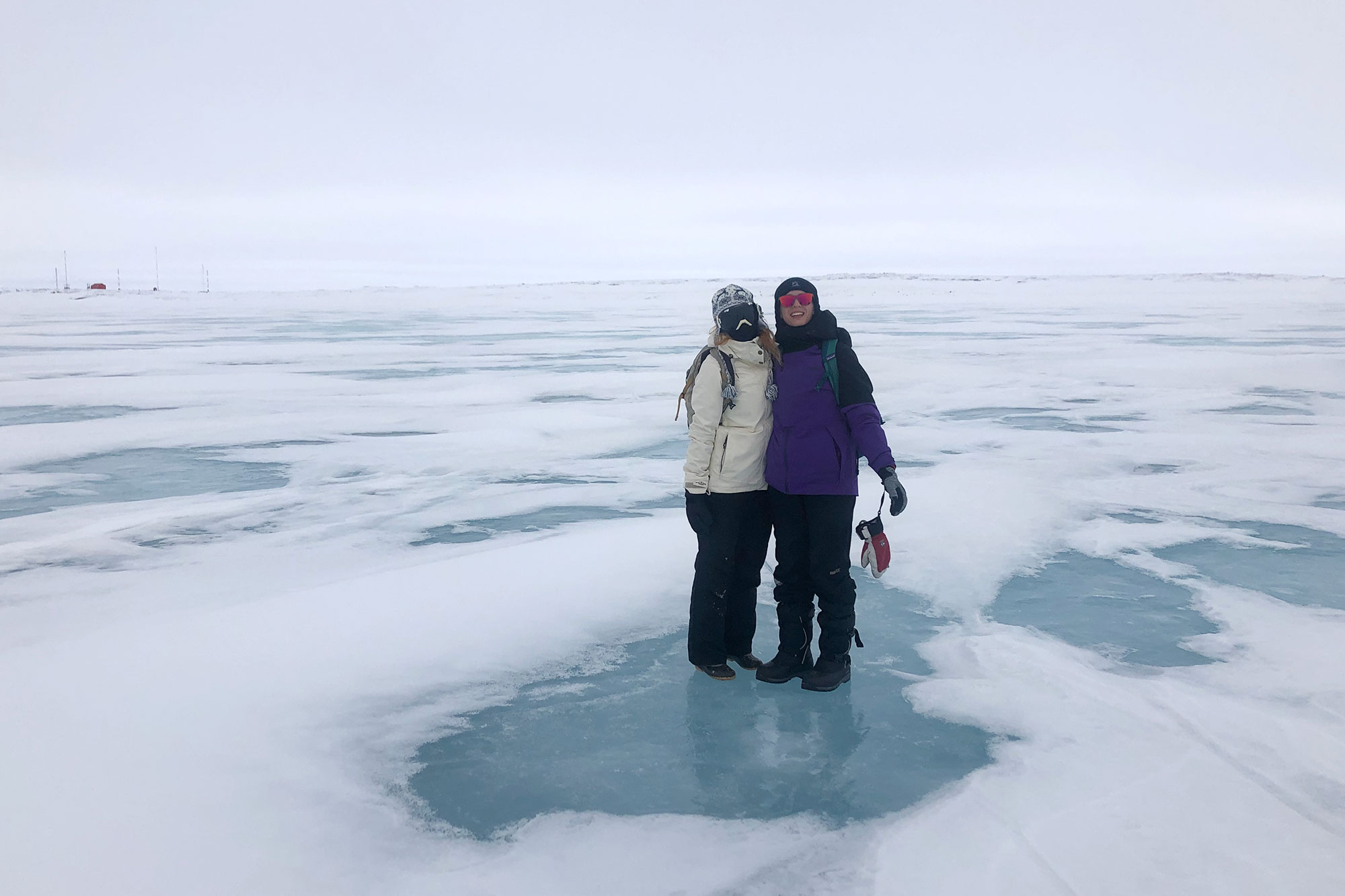
Julie Sherman (left) and Rebecca Hardenbrook.

